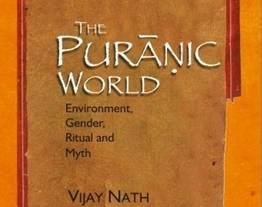A story of Adbhuta Ramayana can be truly called as Sitayana. This narrative of Shakta orientation focusing on Sita depicts her as the avatara of Mahakali.
Valmiki Ramayana elaborates the story of Rama’s birth. In Adbhuta Ramayana , Vishnu takes avatara as Rama due to a curse given by Narada to experience the pain of separation from Sita. Vishnu married Shrimati by mischief and that was the reason of Narada’s anger. In Valmiki Ramayana, Sita is obtained by Janaka while ploughing the land. Therefore, she is called as the daughter of earth. Adbhuta Ramayana describes the inside story as to how she was received by Janaka from the earth. Sita’s birth has not received elaborate treatment in the narrative of Valmiki. Author of Adbhuta Ramayana giving elaborate treatment provides the divine cause for her birth.
Ravana has obtained a boon from Brahmadeva that he cannot be killed by devas, gandharvas, rakshasas. If he wishes his own daughter with lust then he will get killed. Ravana wants to become master of three worlds. He thought this impossible without conquering sages of Dandakaranya. He started collecting their blood in kalash by tip of the arrow. There was a sage named Grutsamada having hundread sons but still wished for Lakshmi as his daughter. He used to collect milk with Kush grass by uttering mantras. Once Ravana by mistake collected blood of Sages in the kalash of Grutsamada out of which Lakshmi was supposed to be born. Ravana unaware of the fact, gave that kalash to Mandodari. He instructs her that not to give this kalasha to anyone as it is poisonous than poison because it is comprised of Sages’ blood.
Ravana is engrossed in enjoyment with other women. Mandodari is weeping for the same and decided to commit suicide by drinking the blood from kalasha. Unlike Valmiki Ramayana, author of Adbhuta Ramayana gives free vent to emotions of Mandodari.
Instead of dying, Mandodari became pregnant. She was more upset by thinking that even Ravana has not turned up from a year. This will be a great blot on her character. She aborted the baby by going to tirtha of Kurukshetra and buried in earth there itself. Janak had come for the performance of sacrifice at Kurukshetra. He received a baby and there was akashavani saying ‘she will perform great deeds in the future, you should brought her up as your own daughter’. Thus, Sita is born out of blood of Sages mixed with abhimantrita milk. She is the daughter of Mandodari and therefore of Ravana too. Thus, she becomes the cause of Ravana’s death.
Ram killing Ravana is considered very ordinary task in Adbhuta Ramayana. Sita knows that it is necessary to kill thousand headed Ravan. Ram felt unconscious while fighting with thousand headed Ravan. Then Sita appears in the form of Mahakali and killed Sahasra Ravana. She appeared in horrific form and started destroying Rakshasas. Gods were afraid that whole earth will get destroyed. Brahma then restored consciousness of Ram for regaining Sita in original form. Rama was afraid of seeing Mahakali form of Sita. Brahma gives him divine sight to see Sita’s divinity. Rama then praises Sita with 1008 names. Narrative ends with a saying that Ram is powerless without Sita. In fact, Shiva and Shakti are not different but one.
Adbhuta Ramayana has propagated Shakta cult by stating her as mulaprakriti. There are two layers to this narrative. Philosophically it presents Sita as ultimate Supreme Reality on surface level of narrative. Narrator gives a due justice to Sita who represents women in general. Sita is a woman fulfilling the purpose of life, raising voice against injustice, doing valorous deeds and Independent in thought and deeds.
Adbhuta Ramayana is truly feminine Ramayana in totality. It not only gives justice to the character of Sita but highlights the significance of femininity. Dashratha performs sacrifice named Putrakameshti for getting sons. In Adbhuta Ramayana, Grutsamada is performing rituals for getting a daughter inspite of having hundred sons. This expression truly reveals the significance of femininity in the mind of narrator. Though miraculous, this Ramayana definitely is modern due to its feminine orientation.


